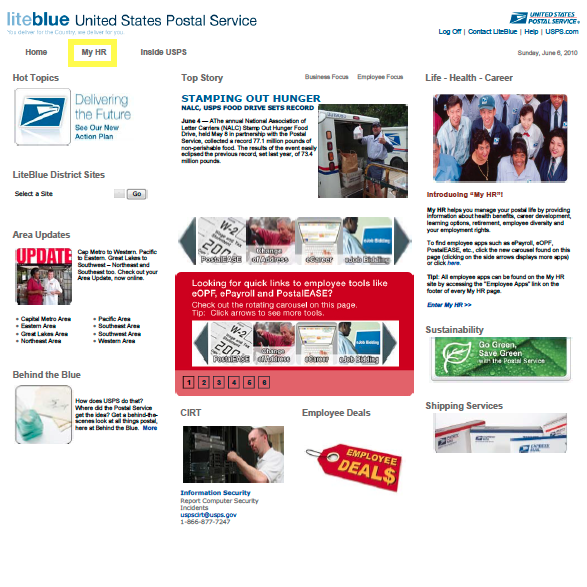Early Retirement Programs: VERA and VSIP
 Given the ongoing efforts to reduce federal deficits, many federal agencies have been offering early-retirement programs to their employees. Two such programs are the Voluntary Early Retirement Authority (VERA) and Voluntary Separation Incentive Payments (VSIP) initiatives. This article discusses both of these programs, including which employees are eligible for them, the effect of them on CRSR and FERS annuities, and health and life insurance benefits, and post-retirement employment issues following a VERA or a VSIP, including federal and non-federal employment.
Given the ongoing efforts to reduce federal deficits, many federal agencies have been offering early-retirement programs to their employees. Two such programs are the Voluntary Early Retirement Authority (VERA) and Voluntary Separation Incentive Payments (VSIP) initiatives. This article discusses both of these programs, including which employees are eligible for them, the effect of them on CRSR and FERS annuities, and health and life insurance benefits, and post-retirement employment issues following a VERA or a VSIP, including federal and non-federal employment.
Voluntary Early Retirement Authority (VERA)
Voluntary Early Retirement Authority (VERA) allows agencies that are undergoing substantial change to temporarily lower the age and service requirements in order to increase the number of employees who are eligible for retirement. The authority encourages more voluntary separations and helps the agency complete the needed organizational change with minimal disruption to the work force. By offering these short-term opportunities, an agency can make it possible for employees to receive an immediate annuity years before they would otherwise be eligible.
An agency must request VERA and receive approval from the Office of Personnel Management (OPM) before the agency may offer early retirement to its employees. The approval from OPM will provide a timeframe during which the option will remain available. Agencies such as the Department of Defense that have been granted agency-specific VERA authority are not required to seek OPM approval for their use of this option.
Employee Coverage
Voluntary Early Retirement Authority offers apply to employees covered under both the Civil Service Retirement System (CSRS) and the Federal Employees Retirement System (FERS). When an agency has received VERA approval from OPM, an employee who meets the general eligibility requirements may be eligible to retire early. The employee must:
- Meet the minimum age and service requirements –
- At least age 50 with at least 20 years of creditable Federal service, or
- Any age with at least 25 years of creditable Federal service;
- Have served in a position covered by the OPM authorization for the minimum time specified by OPM (usually 30 days prior to the date of the agency request);
- Serve in a position covered by the agency’s VERA plan; and
- Separate by the close of the early-out period.
The Effect of Early Retirement on Your Annuity
Employees considering an early retirement must consult with their human resources office and follow agency procedures to receive an annuity estimate and obtain advice specific to their personal situation. You may also want to consider using a federal retirement calculator which will assist you in performing “what if” calculations to help you decide whether to take an “early out.”
CSRS Annuity
- Start date of your annuity – If the employee retires on the 1st, 2nd, or 3rd day of a month, the annuity begins the following day. Otherwise, the annuity begins the first day of the month following retirement.
- Calculation of your annuity – Your annuity is calculated based on your average high-3 salary and years and months of creditable service. Unused sick leave can be used for additional service credit. If the employee is under age 55, this calculation is reduced by one-sixth of 1% for each full month he/she is under age 55 (i.e., 2% per year).
FERS Annuity
- Start date of your annuity – Your annuity begins the first day of the month following your retirement.
- Calculation of your annuity – FERS Basic Annuity is calculated based on the average high-3 average salary and years and months of creditable service. Under FERS, unused sick leave cannot be used for additional service credit, unless the employee is a FERS transferee with a CSRS component. A FERS transferee with a CSRS component receives credit for unused sick leave; the amount of credit will be the lesser of:
- 1. The employee’s sick leave balance as of the date of transfer to FERS; or
- 2. The employee’s sick leave balance as of the date of retirement.
There is no annuity reduction in the FERS annuity for employees who retire on an early voluntary retirement under age 55. A FERS transferee with a CSRS component in his/her annuity, who retires before age 55, will have the CSRS portion of the payable annuity reduced by one-sixth of 1% for each full month he or she is under age 55. No reduction will be applied to the FERS component of the annuity.
A FERS Annuity Supplement is payable to an employee who has completed at least one calendar year of FERS service when he or she reaches Minimum Retirement Age (MRA). MRA is age 55 to 57, depending on your date of birth. The annuity supplement is payable until eligibility for Social Security begins at age 62, subject to an earnings limitation.
Effect of Early Retirement on Benefits
Health Benefits:
Employees retiring in conjunction with a VERA or VSIP authority must have been covered under the (Federal Employees Health Benefit) FEHB Program: (1) for the last 5 years of their Federal civilian service in order to continue such coverage in retirement, or (2) if less than 5 years, for all service since the employee was eligible for these benefits unless these requirements are waived.
OPM will grant pre-approved waivers to employees who have been:
- Covered under the FEHB Program continuously since the beginning date of the agency’s latest statutory VSIP authority, or OPM-approved VSIP or VERA authority; and
- Retire during the statutory VSIP or OPM-approved VSIP/VERA period; and
- Receive a VSIP; or
- Take early optional retirement (i.e., VERA); or
- Take discontinued service retirement based on an involuntary separation due to RIF, directed reassignment, reclassification to a lower grade, or abolishment of position.
Coverage as an annuitant is identical to coverage as an employee, but premiums are not paid on a pre-tax basis.
Life Insurance:
Federal Employees Group Life Insurance can be continued through the retirement system provided that the employee has carried the coverage for at least five years prior to retirement. The value and cost of the life insurance will depend on elections made at retirement.
Voluntary Separation Incentive Payments (VSIP)
A Voluntary Separation Incentive Payment (VSIP), also known as “buyout authority,” is identical to VERA, as it allows agencies that are downsizing or restructuring to offer early retirement to eligible employees. In addition, VSIP offers an added early retirement incentive of a lump-sum payment (up to $25,000) to voluntarily separate.
Those employees who meet the following general requirements may be eligible to receive VSIP:
- Serving in an appointment without time limit;
- Currently employed by the Executive Branch of the federal government for a continuous period of at least three years;
- Serving in a position covered by an agency VSIP plan;
- Applying for and receive approval for VSIP from the agency making the VSIP offer; and
- Not be included in any of the ineligibility categories listed below.
Employees in the following categories are not eligible for VSIP:
- Reemployed annuitants;
- Employees who have a disability such that the individual is or would be eligible for disability retirement;
- Those who have received a decision notice of involuntary separation for misconduct or poor performance;
- Those who previously received any VSIP from the federal government,
- Those who, during the 36-month period preceding the date of separation, performed service for which a student loan repayment benefit was paid, or is to be paid;
- Those who, during the 24-month period preceding the date of separation, performed service for which a recruitment or relocation incentive was paid or is to be paid; and
- Those who during the 12-month period preceding the date of separation, performed service for which a retention incentive was paid or is to be paid.
An agency computes the amount of the VSIP on the basis of the lesser of: (1) an amount equal to the amount of severance pay the employee would be entitled to receive without adjustment for any previous payment made; or (2) an amount determined by the agency head, not to exceed $25,000.
Note that a VSIP lump sum payment is subject to federal, state and local income taxes, as well as to Social Security (FICA) and Medicare Part A (hospital insurance) payroll taxes. A VSIP lump sum payment cannot be rolled over or transferred to the TSP or to a traditional or Roth IRA.
An employee who receives VSIP and later accepts employment for compensation with a federal agency within five years of the date of separation on which the VSIP is based, must repay the entire amount of the VSIP to the agency that paid it. Note that this repayment must be made before the individual’s first day of reemployment. Under certain circumstances the OPM Director may, at the request of the head of the agency, waive the repayment requirement.






